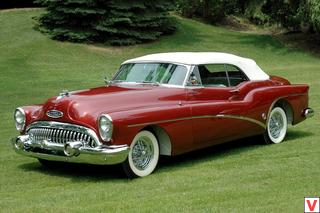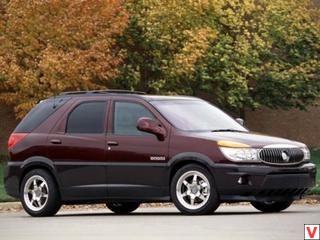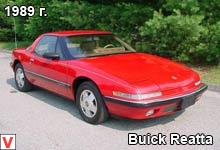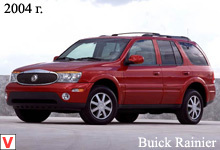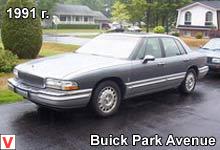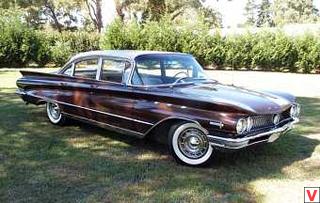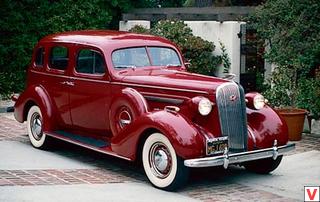
Model Riviera - the highest achievement of the Buick family in the genre of luxury coupe. The car was awarded an extravagant style and a huge margin of power. The designers had the task to combine the dynamics of Ferrari and the respectability of Rolls-Royce.
The basis for the luxury coupe served as a model Oldsmobile Aurora. In the lines of the rear part of the roof, Rolls-Royce really guessed, and the front facing was “boxed”, like at Ferrari. By its appearance, the Riviera had nothing in common with other models of the Buick of that era, although the frame for it was a standard Buickovic one, only shortened and narrowed. The model was produced exclusively with a coupe body, thus becoming one of the pioneers of the “personal luxury coupe” class that was emerging in America. In an incomprehensible way, Riviera attracted everyone’s attention and became the flagship of the Buick model line, immediately ensuring success in the United States.

In 1963, 40 thousand units were sold, in 1964 - 37658 units. The base engine was a 401-cc V8 with a capacity of 325 forces, but for only $ 50 you could order a 425-cc, developing 340 hp. The engines were paired with a dual-band automatic transmission. The sophisticated suspension solution gave this rather massive (1717 kg) car an amazing vivacity. Anti-lock system contributed to effective braking. The impressive size of the model provided the driver and passengers with comfortable accommodation in the cabin.
Internal equipment is fully consistent with the class of the car. In 1964, the Riviera received a subtle cosmetic redesign, and the dual-band “machine” was changed to a three-band. The following year, they made changes to the front of the body (the headlights were hidden behind the lining, and the rear lights were built into the bumper) and they sold another 34586 cars. At the same time, a “sports” modification of Grand Sports (GS) appeared, which included stiffer shock absorbers in the suspension, a relatively more “sharp” steering wheel, rubber with a slightly reduced and extended profile on the rollicking design discs.
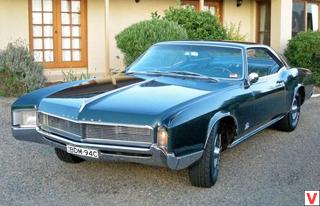
Optionally, the GS-model could be equipped with a 4-speed manual transmission and a 425th engine, forced to 360 forces, and its maximum speed was 125 mph. In 1966, the release of the second generation Riviera began. The car has been completely updated, making its shape smoother and more curvilinear. Now it had a common body with the Oldsmobile Toronado, but only the internal structure of the body was common, and the external lining panels and, correspondingly, the general appearance differed very much. The Riviera was a large squat coupe with a sloping top (like a fastback), without central pillars and a front end with protruding front wings.
The second generation received an extended wheelbase and a much more massive two-door coupe. Sales rose to 45 thousand units. In 1967, the 425th engines were ceased to be installed on the Riviera and they offered new 430-cc, which were more appeasable, more reliable and gave out the same 360 “horses”. In 1968, the appearance of the car was updated, retaining the wheelbase of 3.02 m. The uniqueness of the image disappeared. Riviera became even more related to Oldsmobile's Toronado. But unlike the front-wheel Toronado, the rearranged Buick Riviera retained the rear-wheel drive.
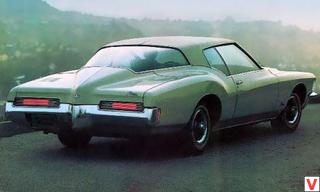
The grille and the front bumper were redesigned, and the headlights were still hidden. The Gran Sport option was still offered, with it you could accelerate a coupe weighing 4,222 pounds to 130 miles per hour. In 1969, the design almost did not change: body moldings with a silver accent were added and the contours of the body slightly changed. In 1970, there was a redesign, which brought a modified grille, similar to other Buick models, the headlights no longer disappeared, the contours of the body changed and, in general, the car became big and clumsy. In 1971, the fully renovated Riviera was released. The new look was so unusual that the car was either loved or hated.
The exterior has received an unusual design with an arched tail end in the style of “boattail” (feed of the boat) and a huge rear window. The “styling” styling gave the car individuality, but scared the general public away. The average American buyer was not ready to accept such a striking appearance. As a result, sales fell below thirty-five thousand cars annually, - while in 1969 Riviera cars of not the most successful model managed to sell almost 53 thousand pieces. In 1973, almost everything remained unchanged: the same design, albeit with a reduced tail, the same 455th V8, giving out 250 hp.
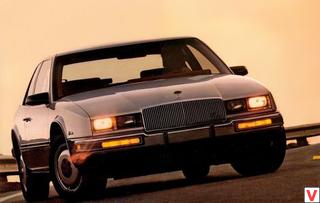
In the crisis 70s, along with the total loss of their “face” by American cars, Riviera also loses originality. In 1974, the Riviera lost its “boat tail” and elegant contours of the body, and the weight increased to 4,572 pounds. Motors with a volume of 455 cubes now gave out only 210 hp. on net and continued to decline in power. Capacity continued to decline until 1978, when the 455th was replaced with 350 and 403-cubic V8. The car did not win fans.
Large, sturdy, with sluggish plastic lateral surfaces, with a boring and inexpressive roof line. Sales fell again. More than 20 thousand cars of this sample per year could not be sold, and in 1975 only 17306 copies were found by its buyer. However, the car was produced for three years. In 1979, the Riviera received a front-wheel drive. The car has become shorter and lighter, has acquired, in addition to its traditional 8-cylinder, 6-cylinder (V6 with turbocharging), and in addition to its traditional closed version, starting c 1982, - open. Demand for an updated car jumped sharply.
The next facelift was needed only by 1986, and it affected mainly the rear end of the body. However, at the same time, the car lost its version with the V8 engine and henceforth was only supplied in the six-cylinder version. Not available after 1985 and open model. In 1989, the model was restyled, the model was lengthened by 11 inches (about 26 cm).
In this form, the model (which in 1991 received a new grille) was produced until 1993. Riviera 1994 does not exist. The new Riviera appeared only in 1995 (on the front-wheel drive G-platform), being made in the then fashionable “bionic style”, which is characterized by smooth contours.
This generation has a circulation of 23,350 pieces. By 1997, sales fell to 14097 cars. Buick management has decided to release the limited edition 1999 Riviera. About 200 copies of this amount went on sale under the name Silver Arrow (“Silver Arrow”).
